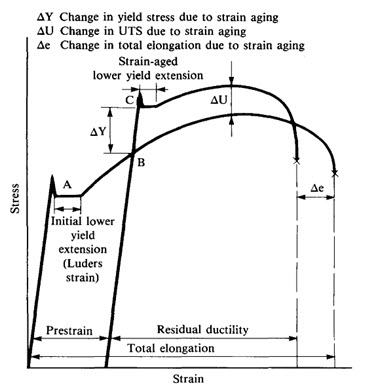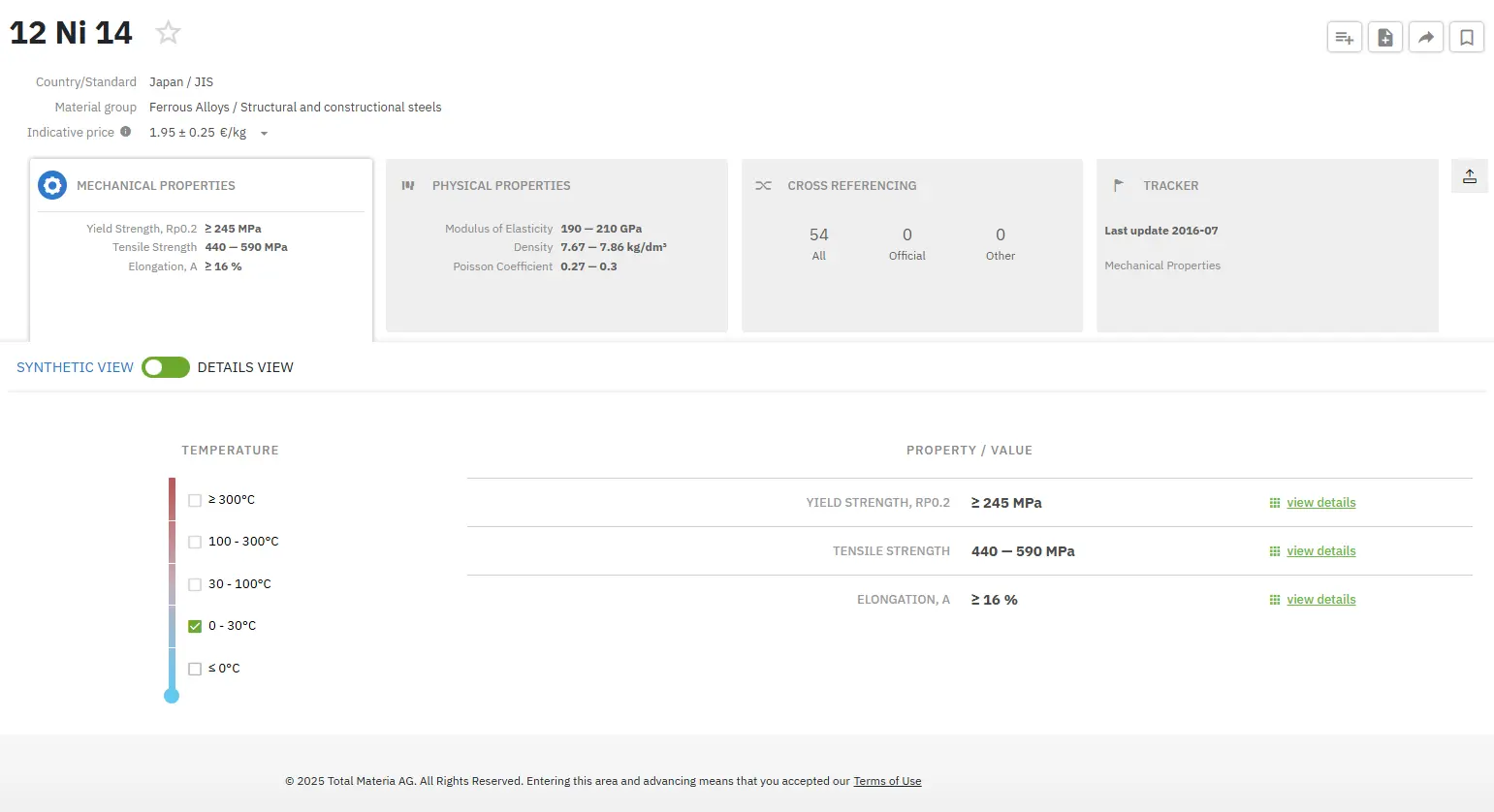Strain Ageing of Steel: Part One
Abstract
Strain ageing of steel is a phenomenon first identified in the 19th century, characterized by an increase in the load-carrying capacity of steel after it has been plastically deformed and subsequently aged. This article explores the mechanisms and metallurgical causes behind strain ageing, its effects on steel properties, and the implications for structural steels.
Overview of Strain Ageing
Strain ageing occurs when steel that has been plastically deformed is allowed to age, leading to changes in its mechanical properties. The process is attributed to the diffusion of carbon and/or nitrogen atoms to dislocations formed during plastic deformation, which results in a complex series of metallurgical reactions.
Bauschinger observed this increase in strength in 1887, noting that after a steel specimen was tested and then aged, its maximum load-carrying capacity improved. This phenomenon can be explained by the time-dependent diffusion of small elements, such as carbon and nitrogen, to crystal defects, enhancing the resistance to dislocation movement and thereby increasing yield strength.
Effects of Strain Ageing
Research over the past five decades indicates that all structural steels are susceptible to strain ageing. This process typically results in:
- Increased yield strength and ultimate tensile strength of reinforcing steel bars.
- Decreased tensile elongation capacity.
When steel has been strained (deformed plastically) and then allowed to age, it is subjected to strain ageing. For example, Figure 1 illustrates the stress-strain curve for mild steel (low-carbon steel) compared with the same steel pre-strained up to point B and then subjected to ageing. As a result of strain ageing, the yield strength (ΔY) and the tensile strength (ΔU) increase, while elongation decreases by an amount (Δe). Generally, strain ageing enhances strength but results in a loss of ductility. It is known that strain ageing is accompanied by a decrease in fracture toughness, which is usually reflected by an increase in the brittle transition temperature (BTT).

Figure 1: A schematic representation of the influence of strain ageing on the stress-strain curve for mild steel (UTS =ultimate tensile strength)
Mechanism of Strain Ageing
The mechanism behind strain ageing involves the diffusion of carbon and nitrogen atoms to dislocations generated by plastic deformation. Initially, an atmosphere of these atoms forms along the dislocation, immobilizing it. With extended ageing, sufficient carbon and nitrogen atoms can precipitate along the dislocation, impeding subsequent dislocation movement and resulting in hardening and reduced ductility.
The extent of strain ageing is influenced by ageing time and temperature, with prolonged ageing leading to a saturation point above which no further effects are observed. High-temperature ageing can even cause over-ageing, leading to reduced hardness and increased ductility. The presence of minimal amounts of carbon and nitrogen—sometimes as little as 0.01%—can trigger strain ageing.
Metallurgical Causes of Strain Ageing
The alloying elements in steel are distributed among microstructural constituents, primarily iron and iron carbide. Nitrogen and some carbon exist in the iron-rich phase as small atoms located in the crystal interstices. After cooling from rolling, these atoms migrate toward dislocations, creating distortions in the crystal lattice.
The movement of interstitial atoms to dislocations stabilizes them, increasing the force required for dislocation slip and thus raising the steel's strength. In cases where both carbon and nitrogen are present, the formation of iron-carbon-nitrogen compounds (carbonitrides) further restricts dislocation motion.
Temperature plays a crucial role in the ageing process of structural steels. These steels, which contain more carbon and alloying elements than sheet steels, exhibit significant ageing effects at elevated temperatures (typically in the 300°F-700°F range) for durations of 1-5 hours.
Cold Deformation and Its Effects
A secondary strengthening mechanism occurs with cold deformation. When dislocations move and interact, their mobility decreases, leading to increased strength along with reduced ductility and toughness. Consequently, cold-deformed steels exhibit diminished ductility prior to any strain ageing, and subsequent heating amplifies this loss.
The combination of increased strength (ΔY), reduced ductility, and toughness loss—both from cold deformation and strain ageing—constitutes the primary characteristics of strain ageing in structural steels.
Conclusion
Strain ageing of steel is a critical phenomenon that influences the mechanical properties of structural steels. Understanding its mechanisms and effects is essential for engineers and metallurgists to optimize steel performance in various applications.
材料の正確な特性を即座に検索!
Total Materia Horizon には、数十万種類の材料の機械的・物理的特性が、異なる温度・条件・熱処理などに応じて収録されています。

Total Materia Horizonの無料テストアカウントを開設して、120カ国以上、50万人を超えるユーザーのコミュニティに参加しましょう!